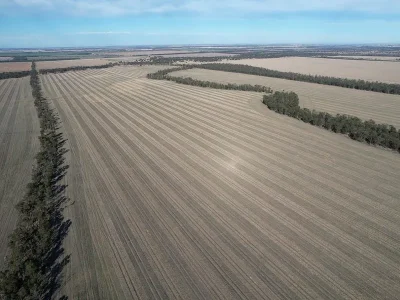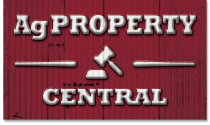
Sorghum growing on the Terlings and Dundenoon aggregation. Photo: LAWD
AN HISTORIC north-west New South Wales cropping aggregation made famous by a royal visit has returned to the market with a $36-million price tag.
The non-contiguous 1860ha Terlings and 1400ha Dundenoon (3km apart) are located 48km north-east of Moree and 76km south-west of Goondiwindi in the acclaimed Golden Triangle region.
Spanning a combined 3260ha, the properties were held by well-known industry veteran Sinclair Hill before his daughter Carina and husband Ed Shannon took ownership in 2019.
Mr Hill is credited with teaching King Charles III to play polo.
In 1981, he hosted the then Prince of Wales at Terlings over the Easter long weekend.
During the family’s 120-year tenure, the enterprise has transitioned from fine wool to a bullock backgrounding operation and more recently to grain, cereal and pulse production.
Around 71 percent of the aggregation is arable and accommodates a winter and summer-cropping rotation, comprising barley, wheat, canola, sorghum and chickpeas, on a mix of black, brown and red self-mulching clays.

The Terlings and Dundenoon aggregation features productive soils. Photo: LAWD
Mr Shannon said the quality of the soil speaks for itself.
“After converting from livestock, the first wheat crop yielded six tonnes per hectare in a year that was particularly challenging for a number of reasons, including a very high rainfall,” Mr Shannon said.
“The country has a slight undulation throughout allowing for flooding rains to drain very quickly, which we see as something of a defining feature of these blocks.”
Historically, the vendors have run 150 cows on the productive pastures and sheltered timbered grazing, which LAWD director Tim Corcoran said is ideal for livestock-breeding systems and agistment opportunities.
Water is sourced from double frontage to the Nee Nee Creek, numerous dams and an artesian bore.

Biodiversity is a feature of the Terlings and Dundenoon aggregation. Photo: LAWD
Mr Shannon said the 3274ha institutional-grade cropping and grazing enterprise also offers potential biodiversity offsets.
“Preliminary studies by the Biodiversity Conservation Trust have identified unique environmental habitats for koalas and endangered ecological communities.
“These have the potential to provide ecological financial benefits for any future owner.”
Infrastructure includes a seven-bedroom Federation home on Terlings, a five-bedroom Queenslander home on Dundenoon, 550t of grain storage, a 1200t grain bunker, multiple machinery and hay sheds and an airstrip.
Mr Corcoran said the sale process will allow buyers to purchase the aggregation as a whole or individual assets.
Grain Central: Get our free news straight to your inbox – Click here

HAVE YOUR SAY